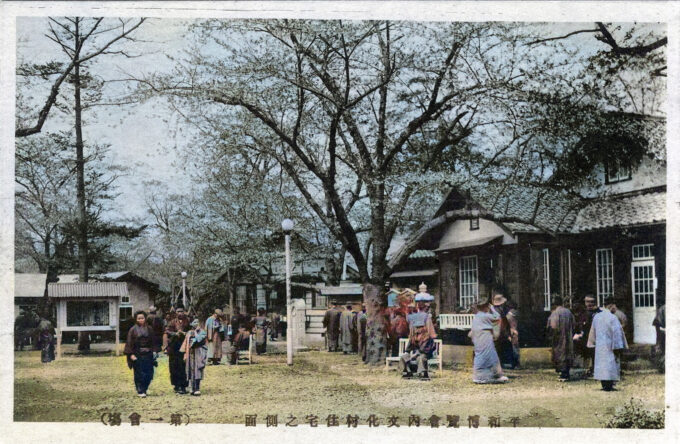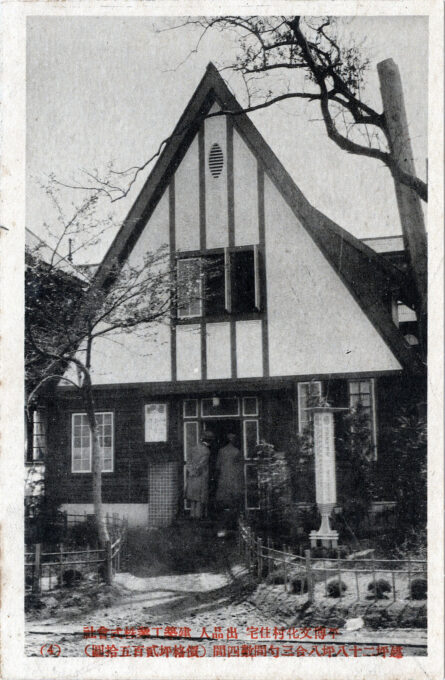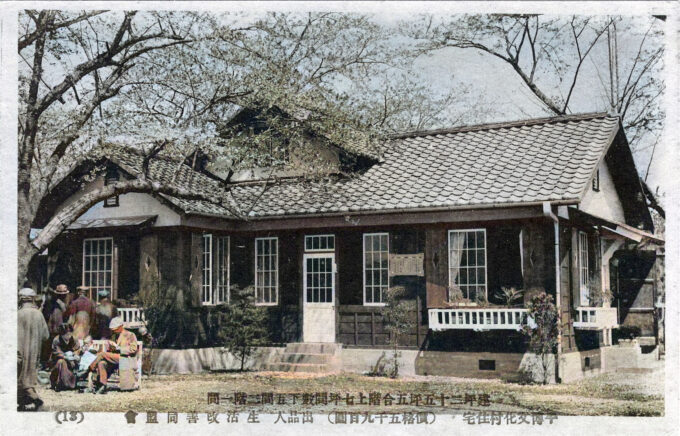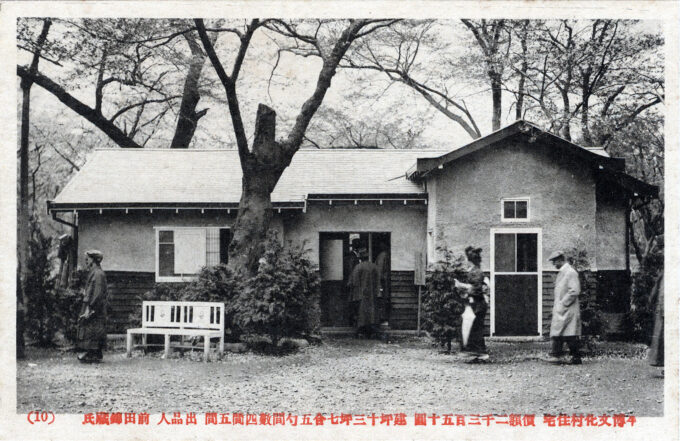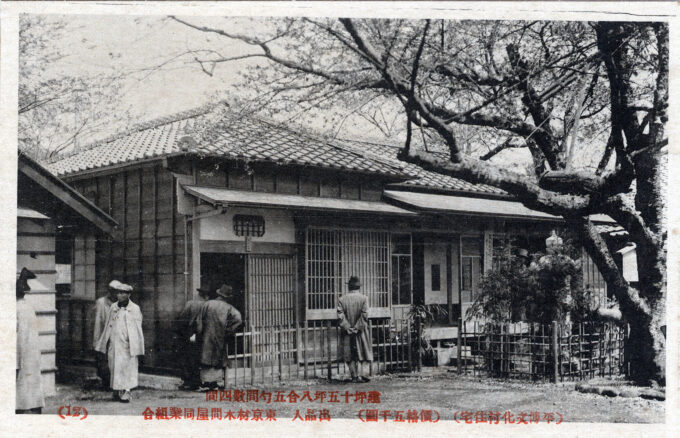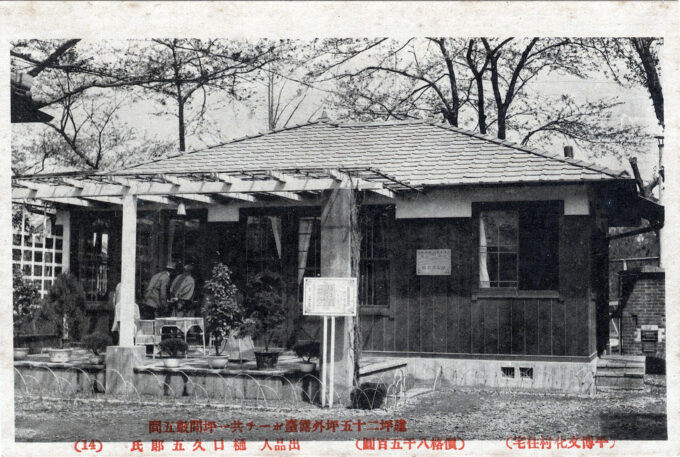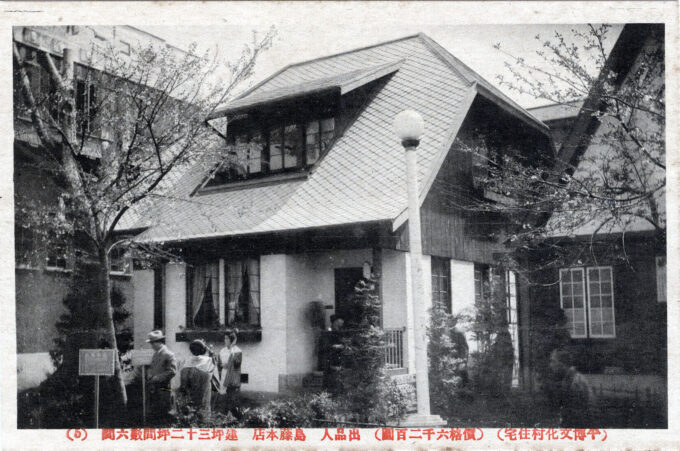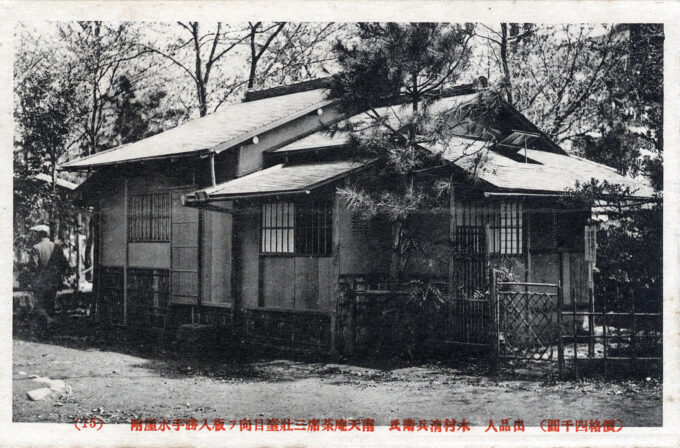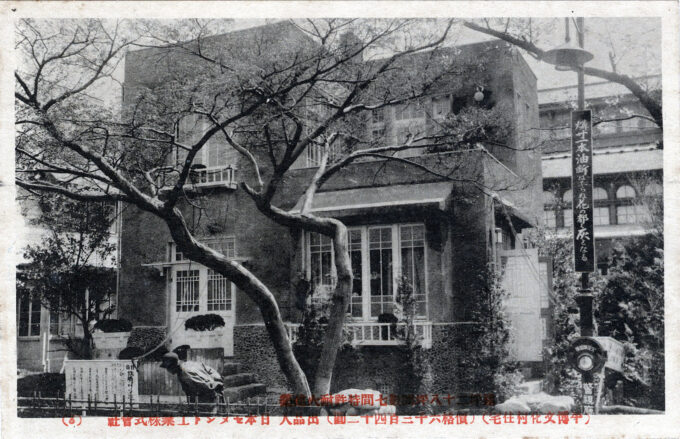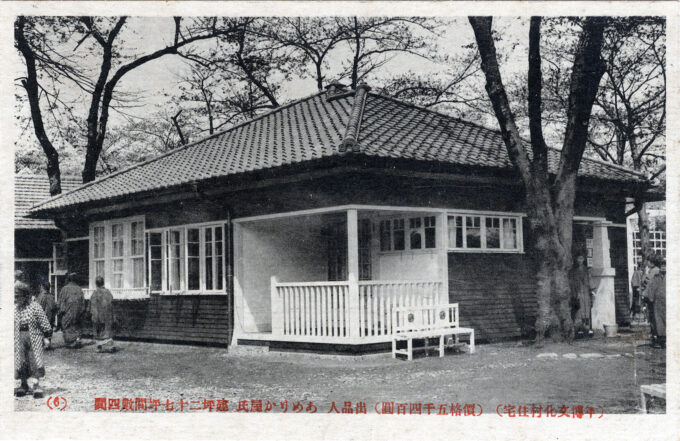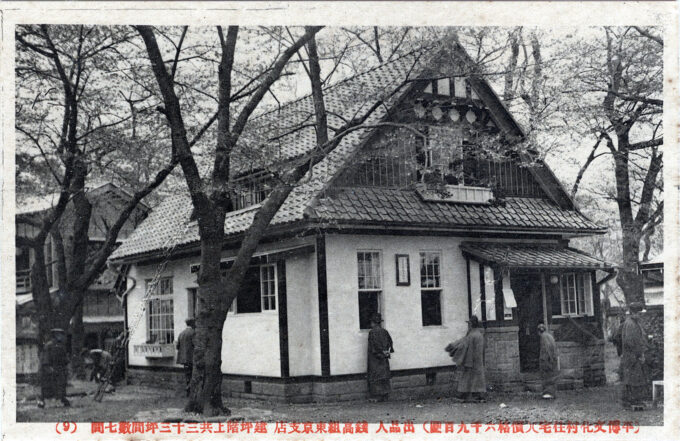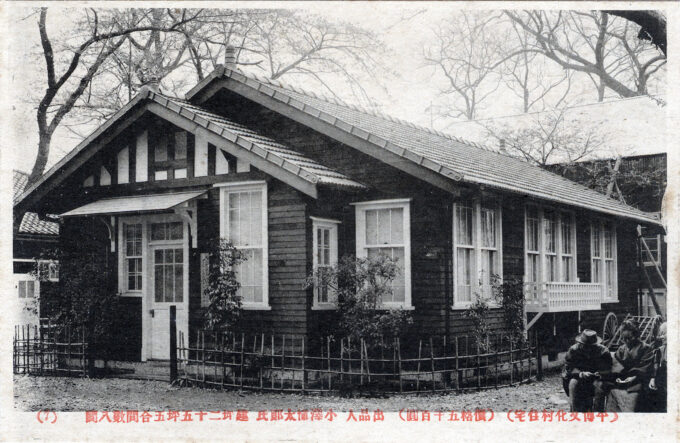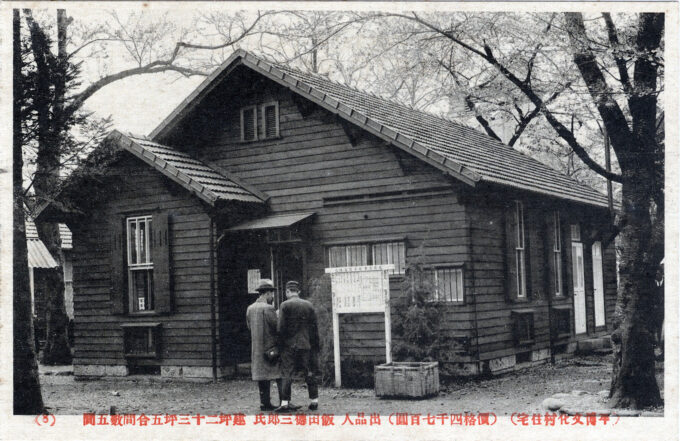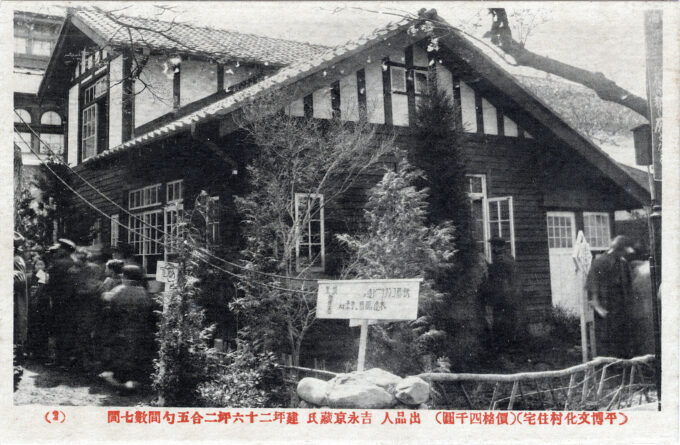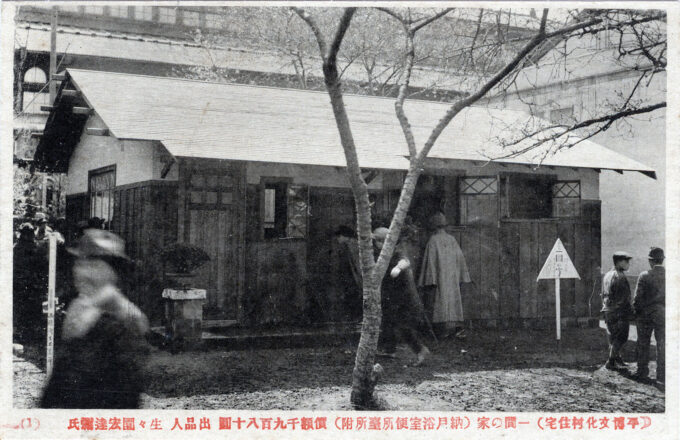“Here, the ‘culture house’ is a new style of house, created to bring about an improvement in ways of living and a reduction in construction cost.
“If its structure and amenities make it no longer a Western house, neither is it a Japanese house.”
– “Bunka Jûtaku Amerika-ya”, Jûtaku, May 1922 (Special Edition)
See also:
Peace Commemorative Exposition, Ueno Park, Tokyo, 1922.
Evening illuminations, Peace Commemorative Exposition, Ueno Park, Tokyo, 1922.
“Running from 10 March to 31 July 1922, the Peace Commemoration Exhibition celebrated the fifth anniversary of the end of the First World War. Organizers hoped that the exhibition would stimulate a depressed postwar economy by increasing the production and consumption of those goods associated with the exhibition.
“Drawing on contemporary interest in home design and housing reform, Culture Village was a popular addition to the exhibition’s pavilions. As the interior decoration and furniture design journal Mokuzai Kôgei (‘Woodcraft’) put it: ‘With its actual exhibits of cultural houses promoted under the aegis of the Architectural Institute of Japan, Culture Village is one of the star attractions of the exhibition.’ However, Culture Village’s crowds were not compelled to visit by a pure interest in housing alone – the sheer novelty of the Culture Houses’ combination of traditionally Japanese and recently imported Western building styles and design details was also a powerful draw.
“… [P]romotional materials described Culture Village’s model houses in terms of the national origin of their parts, offering examples of ‘Western-style seasoned with Japanese style’ or ‘an English cottage with contemporary taste added.’ Several years later, architect Yokoyama Makoto summarized the model houses as Western-style with Japanese-style incorporated; the exteriors were entirely Western-style, but interiors incorporated Japanese-style rooms or included Japanese taste.
“In other words, the houses were interpreted as the fusion or conglomeration of parts from a pre-set vocabulary of functional and aesthetic form whereby all parts are identified by national origin. With the majority of Japanese still living in housing derived from pre-Meiji vernacular forms, such ideas for living space with
identifiably new, non-Japanese or nontraditional forms were definitely something to see.“… With forms imported from Europe and North America most often signifying modernity and indigenous Japanese forms carrying a sense of tradition, Culture Village publicity material prescribed ‘American-style architecture that symbolizes modern taste’ should a sense of modernity be desired; for a peaceful, relaxing atmosphere, ‘a quiet Japanese-style bedroom’ was offered.”
– Nation, Modernity and Interior Decoration: Uncanny Designs in the 1922 Peace Commemoration Tōkyō Exposition Culture Village Houses, by Sarah Teasley, 2017


